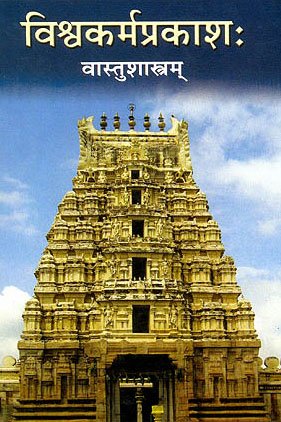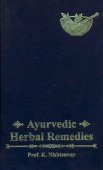Shallaki, Sallaki, Sallakī, Śallakī: 17 definitions
Introduction:
Shallaki means something in Hinduism, Sanskrit, Jainism, Prakrit, Buddhism, Pali, biology. If you want to know the exact meaning, history, etymology or English translation of this term then check out the descriptions on this page. Add your comment or reference to a book if you want to contribute to this summary article.
The Sanskrit term Śallakī can be transliterated into English as Sallaki or Shallaki, using the IAST transliteration scheme (?).
In Hinduism
Ayurveda (science of life)
Rasashastra (Alchemy and Herbo-Mineral preparations)
Source: Wisdom Library: Rasa-śāstraŚallakī (शल्लकी):—One of the sixty-eight Siddhauṣadhi, as per Rasaśāstra texts (rasa literature). These drugs give siddhi (success) in mercurial operations. Even so, they are more powerful than rasa (mercury) itself. These may perform all the kāryas (‘effects’) and grant dehasiddhi (‘perfection of body’) and lohasiddhi (‘transmutation of base metals’) both.
Cikitsa (natural therapy and treatment for medical conditions)
Source: Ancient Science of Life: Botanical identification of plants described in Mādhava CikitsāŚallakī (शल्लकी) refers to the medicinal plant Boswellia serrata Roxb., and is used in the treatment of atisāra (diarrhoea), according to the 7th century Mādhavacikitsā chapter 2. Atisāra refers to a condition where there are three or more loose or liquid stools (bowel movements) per day or more stool than normal. The second chapter of the Mādhavacikitsā explains several preparations [including Śallakī] through 60 Sanskrit verses about treating this problem.
The plant Boswellia serrata Roxb. (Śallakī) is also known as Kunduru according to both the Ayurvedic Formulary and the Ayurvedic Pharmacopoeia of India.

Āyurveda (आयुर्वेद, ayurveda) is a branch of Indian science dealing with medicine, herbalism, taxology, anatomy, surgery, alchemy and related topics. Traditional practice of Āyurveda in ancient India dates back to at least the first millenium BC. Literature is commonly written in Sanskrit using various poetic metres.
Dharmashastra (religious law)
Source: Wisdom Library: Dharma-śāstraŚallakī (शल्लकी) is a Sanskrit word, identified with Boswellia serrata by various scholars in their translation of the Śukranīti. This tree is mentioned as having thorns, and should therefore be considered as wild. The King shoud place such trees in forests (not in or near villages). He should nourish them by stoole of goats, sheep and cows, water as well as meat.
The following is an ancient Indian horticultural recipe for the nourishment of such trees:
According to Śukranīti 4.4.110-112: “The powder of the dungs of goats and sheep, the powder of Yava (barley), Tila (seeds), beef as well as water should be kept together (undisturbed) for seven nights. The application of this water leads very much to the growth in flowers and fruits of all trees (such as śallakī).”

Dharmashastra (धर्मशास्त्र, dharmaśāstra) contains the instructions (shastra) regarding religious conduct of livelihood (dharma), ceremonies, jurisprudence (study of law) and more. It is categorized as smriti, an important and authoritative selection of books dealing with the Hindu lifestyle.
Vastushastra (architecture)
Source: Shodhganga: Elements of Art and Architecture in the Trtiyakhanda of the Visnudharmottarapurana (vastu)Sallakī (सल्लकी) (seeds) are used as an ingredient of a mixture of Vajralepa (“a special kind of hard cement”) which was used in the construction of a Temple and as a binding agent for joining bricks, according to the Viṣṇudharmottarapurāṇa, an ancient Sanskrit text which (being encyclopedic in nature) deals with a variety of cultural topics such as arts, architecture, music, grammar and astronomy. In the Viṣṇudharmottarapurāṇa, five procedures of preparing the vajralepa are suggested. [The first method]—It is incorporated there that the equal portion of some particular objects [e.g., seed of sallakī, etc.] should be boiled in water for eight times till it reduces to one eighth portion of the original value. After that, some more ingredients are added with the mixture and again boiled properly to make the first variety of vajralepa.

Vastushastra (वास्तुशास्त्र, vāstuśāstra) refers to the ancient Indian science (shastra) of architecture (vastu), dealing with topics such architecture, sculpture, town-building, fort building and various other constructions. Vastu also deals with the philosophy of the architectural relation with the cosmic universe.
General definition (in Hinduism)
Source: Wisdom Library: HinduismŚallakī (शल्लकी)—Sanskrit word for a plant Boswellia serrata (produces incense).
In Jainism
General definition (in Jainism)
Source: archive.org: TrisastisalakapurusacaritraŚallakī (शल्लकी) is the name of a tree mentioned in chapter 1.4 [ādīśvara-caritra] of Hemacandra’s 11th century Triṣaṣṭiśalākāpuruṣacaritra: an ancient Sanskrit epic poem narrating the history and legends of sixty-three illustrious persons in Jainism.—Accordingly: “[...] the deodar trees growing on the bank of the Bhāgīrathī served as tying posts (ready) without effort for the king-elephants of the army. In a moment the elephant-keepers cut with axes sprouts of the pippal-tree, of śallakī, karṇikāra, and udumbara for the elephants”.

Jainism is an Indian religion of Dharma whose doctrine revolves around harmlessness (ahimsa) towards every living being. The two major branches (Digambara and Svetambara) of Jainism stimulate self-control (or, shramana, ‘self-reliance’) and spiritual development through a path of peace for the soul to progess to the ultimate goal.
Biology (plants and animals)
Source: Wisdom Library: Local Names of Plants and DrugsShallaki [शल्लकी] in the Hindi language is the name of a plant identified with Boswellia serrata Roxb. ex Colebr. from the Burseraceae (Torchwood) family having the following synonyms: Boswellia glabra, Boswellia thurifera, Bursera thurifera. For the possible medicinal usage of shallaki, you can check this page for potential sources and references, although be aware that any some or none of the side-effects may not be mentioned here, wether they be harmful or beneficial to health.
Sallaki [सल्लकी] in the Sanskrit language, ibid. previous identification.
Shallaki [शल्लकी] in the Sanskrit language, ibid. previous identification.
Sallaki [సల్లకి] in the Telugu language, ibid. previous identification.
Source: Google Books: CRC World Dictionary (Regional names)Shallaki in India is the name of a plant defined with Boswellia serrata in various botanical sources. This page contains potential references in Ayurveda, modern medicine, and other folk traditions or local practices It has the synonym Boswellia thurifera Roxb. ex Flem. (among others).
Example references for further research on medicinal uses or toxicity (see latin names for full list):
· Agents Actions (1986)
· Planta Medica (1998)
· Phytomedicine (2003)
· Asiatic Researches, or ‘Transactions of the Society’ (1807)
· Pl. Coromandel (1811)
· The India Journal of Experimental Biology (IJEB)
If you are looking for specific details regarding Shallaki, for example pregnancy safety, side effects, extract dosage, diet and recipes, health benefits, chemical composition, have a look at these references.

This sections includes definitions from the five kingdoms of living things: Animals, Plants, Fungi, Protists and Monera. It will include both the official binomial nomenclature (scientific names usually in Latin) as well as regional spellings and variants.
Languages of India and abroad
Pali-English dictionary
Source: Sutta: The Pali Text Society's Pali-English DictionarySallakī, (f.) (cp. Class. Sk. śallakī) the tree Boswellia thurifera (incense tree) J iv. 92; pl. ˚ — iyo J vi. 535; bahu- kuṭaja — sallakika Th. 1, 115 (=indasālarukkha (?)). (Page 699)

Pali is the language of the Tipiṭaka, which is the sacred canon of Theravāda Buddhism and contains much of the Buddha’s speech. Closeley related to Sanskrit, both languages are used interchangeably between religions.
Sanskrit dictionary
Source: DDSA: The practical Sanskrit-English dictionaryŚallakī (शल्लकी).—
1) A porcupine.
2) A kind of tree (of which elephants are very fond); अभिलेढु तावदासवसुरभिरसं शल्लकी- भङ्गम् (abhileḍhu tāvadāsavasurabhirasaṃ śallakī- bhaṅgam) V.4.44 (v. l.); Uttararāmacarita 2.21;3.6; Mālatīmādhava (Bombay) 9.6.
--- OR ---
Sallaki (सल्लकि) or Sallakī (सल्लकी).—A kind of tree, Shorea Robusta; cf. शल्लकी (śallakī).
See also (synonyms): sallakā.
Source: Cologne Digital Sanskrit Dictionaries: Shabda-Sagara Sanskrit-English DictionarySallakī (सल्लकी).—f. (-kī) The gum Olibanum tree, (Boswellia thurifera.) E. sal to go, vun aff., and the la doubled; also śallakī.
Source: Cologne Digital Sanskrit Dictionaries: Cappeller Sanskrit-English DictionarySallakī (सल्लकी).—v. śallakī sub śallaka.
Source: Cologne Digital Sanskrit Dictionaries: Monier-Williams Sanskrit-English Dictionary1) Śallakī (शल्लकी):—[from śallaka > śal] a f. See below
2) Śallaki (शल्लकि):—[from śal] f. (m.[case]) = next, [Suśruta]
3) Śallakī (शल्लकी):—[from śal] b f. (also written sallakī) a porcupine, [Rāmāyaṇa; Pañcarātra]
4) [v.s. ...] Boswellia Thurifera, [Mahābhārata; Rāmāyaṇa] etc.
5) [v.s. ...] incense, olibanum, [Suśruta]
6) Sallakī (सल्लकी):—sallakīya = śall q.v.
Source: Cologne Digital Sanskrit Dictionaries: Yates Sanskrit-English DictionarySallakī (सल्लकी):—(kī) 3. f. The gum Olibanum tree.
Source: DDSA: Paia-sadda-mahannavo; a comprehensive Prakrit Hindi dictionary (S)Sallakī (सल्लकी) in the Sanskrit language is related to the Prakrit word: Sallaī.
[Sanskrit to German]
Sanskrit, also spelled संस्कृतम् (saṃskṛtam), is an ancient language of India commonly seen as the grandmother of the Indo-European language family (even English!). Closely allied with Prakrit and Pali, Sanskrit is more exhaustive in both grammar and terms and has the most extensive collection of literature in the world, greatly surpassing its sister-languages Greek and Latin.
Kannada-English dictionary
Source: Alar: Kannada-English corpusŚallaki (ಶಲ್ಲಕಿ):—
1) [noun] the tree Bignonia indica.
2) [noun] the tree Boswellia serrata ( = B. thurifera) of Burseraceae family; Indian olibanum tree.
--- OR ---
Sallaki (ಸಲ್ಲಕಿ):—
1) [noun] the tree Boswellia serata ( = B. thurifera) of Burseraceae family; Indian olibanum tree.
2) [noun] its fruit.
Kannada is a Dravidian language (as opposed to the Indo-European language family) mainly spoken in the southwestern region of India.
See also (Relevant definitions)
Starts with: Shallakidrava, Shallakitvac, Shallakiya.
Full-text (+17): Shallakidrava, Sillaki, Shallakiya, Shallaka, Asraphala, Shallakitvac, Kuraka, Sallai, Jalatiktika, Salaphala, Ashupatri, Asraphali, Silhaka, Gandhamula, Chinnaruha, Hradini, Callaki, Rodhradi, Nyagrodhadi, Pancanakha.
Relevant text
Search found 18 books and stories containing Shallaki, Sallaki, Sallakī, Śallakī, Śallaki; (plurals include: Shallakis, Sallakis, Sallakīs, Śallakīs, Śallakis). You can also click to the full overview containing English textual excerpts. Below are direct links for the most relevant articles:
Atharvaveda and Charaka Samhita (by Laxmi Maji)
Classification of Drugs in the Caraka-Saṃhitā < [Chapter 4 - Diseases and Remedial measures (described in Caraka-saṃhitā)]
1b. Study of Fever (Jvara) in the Caraka-Saṃhita < [Chapter 5 - Diseases and Remedies in Atharvaveda and Caraka-Saṃhitā]
Sushruta Samhita, Volume 6: Uttara-tantra (by Kaviraj Kunja Lal Bhishagratna)
Chapter L - Symptoms and Treatment of Hiccough (Hicca) < [Canto III - Kaya-chikitsa-tantra (internal medicine)]
Chapter X - Treatment of Pittaja Ophthalmia < [Canto I - Shalakya-tantra (ears, eyes, nose, mouth and throat)]
Chapter LII - Symptoms and Treatment of Cough (Kasa) < [Canto III - Kaya-chikitsa-tantra (internal medicine)]
Brihat Samhita (by N. Chidambaram Iyer)
Matangalila and Hastyayurveda (study) (by Chandrima Das)
Classification and Treatment of Elephant diseases < [Chapter 1]
Āpātabandha: The fourth technique < [Chapter 3]
Vāribandha: The first technique < [Chapter 3]
The Garuda Purana (by Manmatha Nath Dutt)
Chapter CXCVI - Therapeutic properties of drugs < [Dhanvantari Samhita]
Chapter CXCIII - Medical treatment of fever etc < [Dhanvantari Samhita]
Chapter CCXXVII - Different names of the Ayurvedic Drugs < [Dhanvantari Samhita]
Ashtavakra Gita (by Ashtavakra)
Related products

